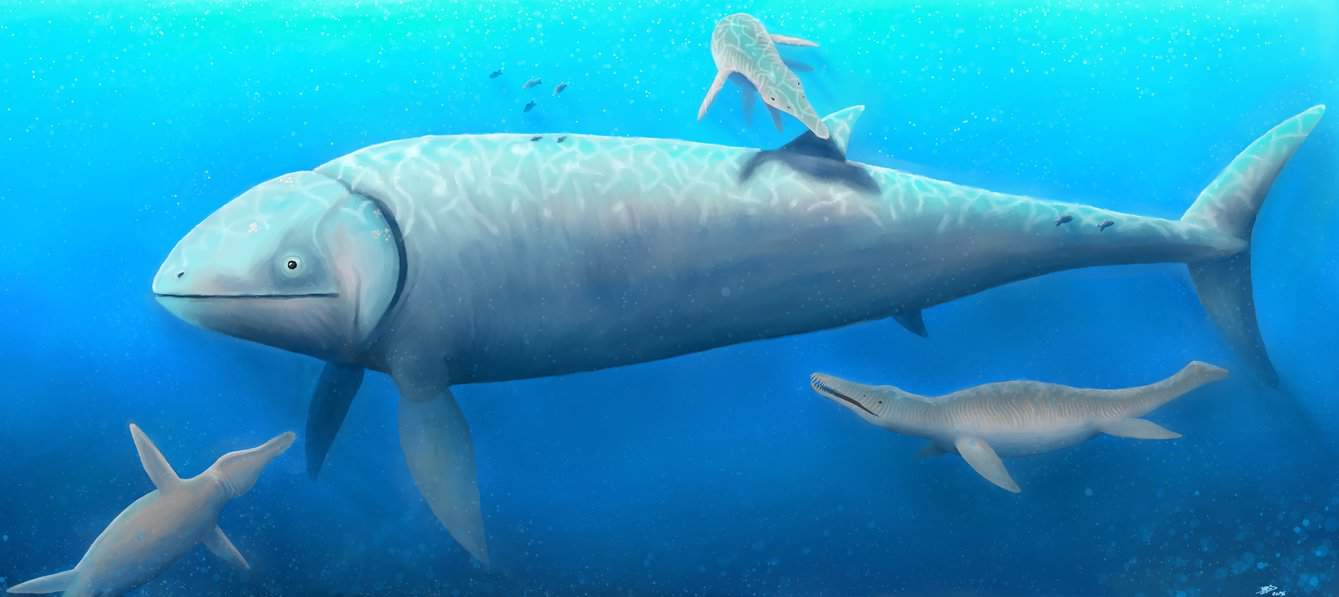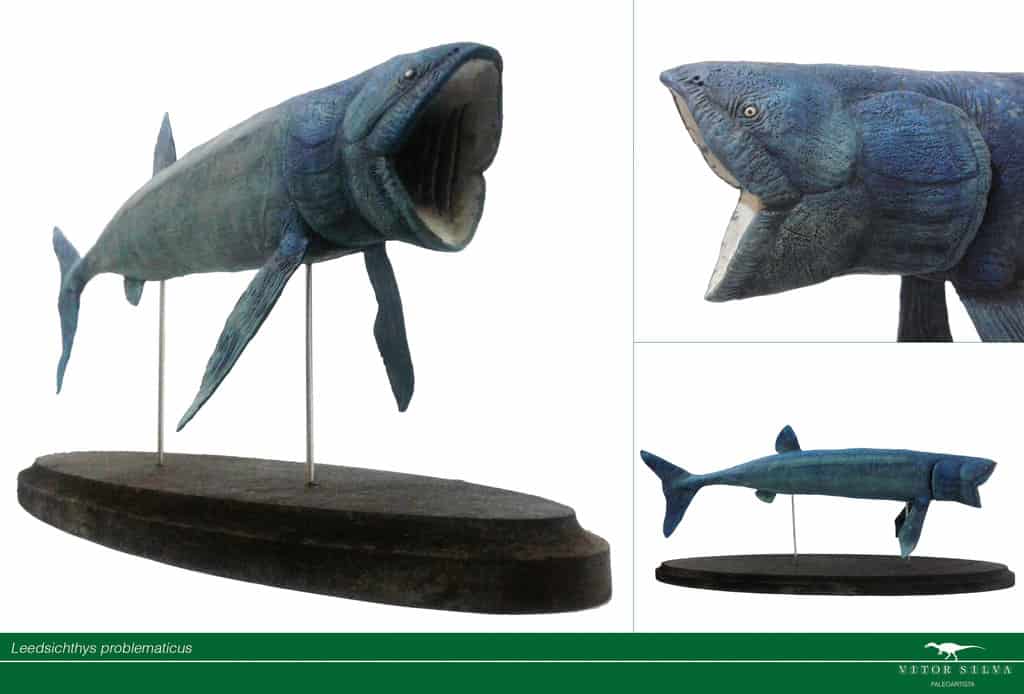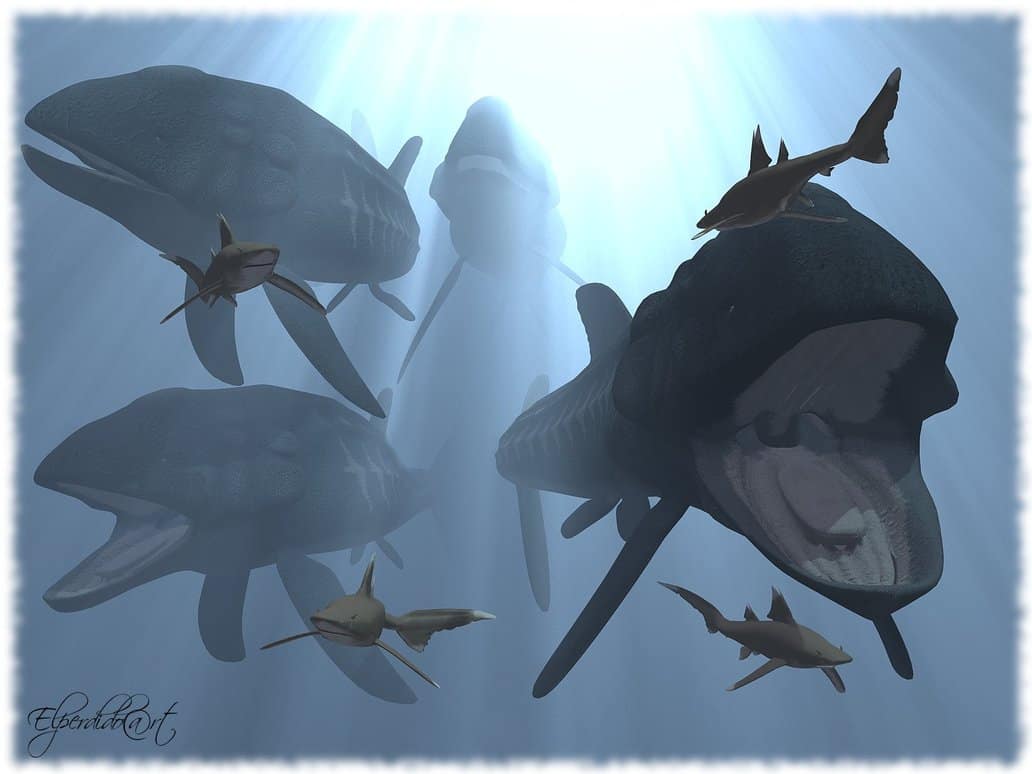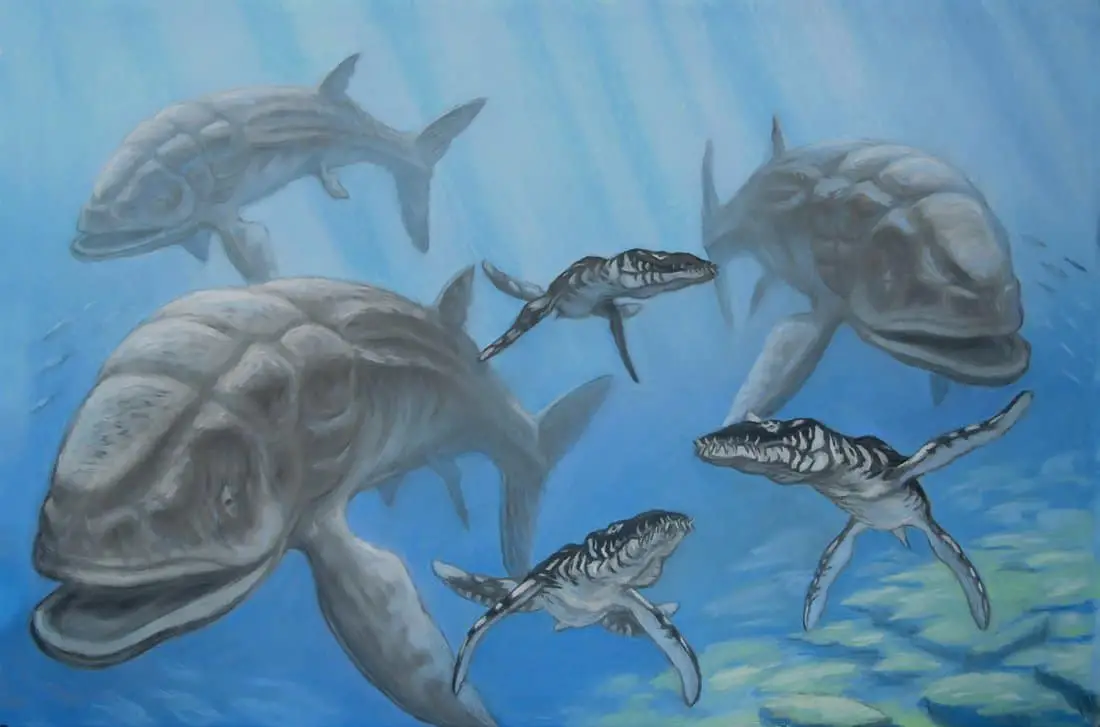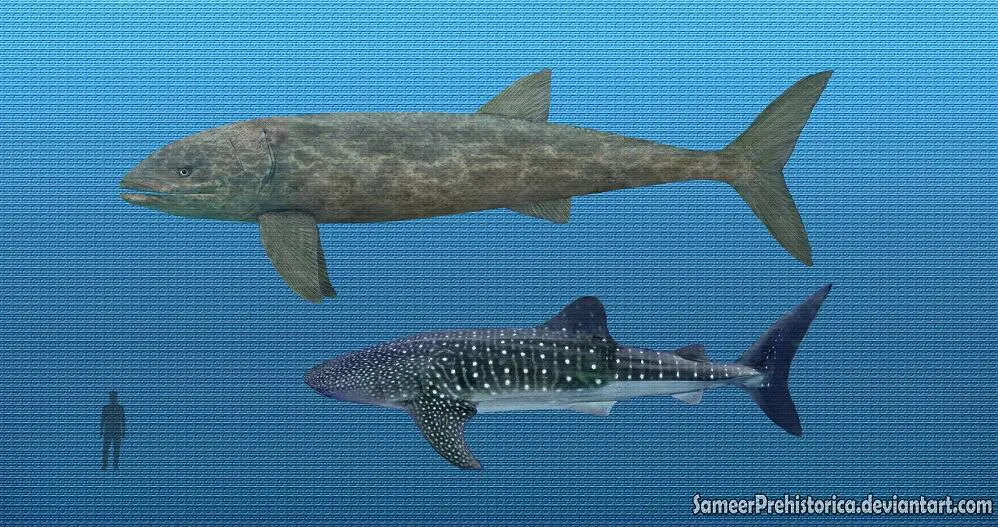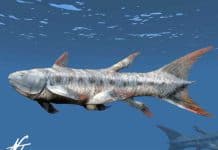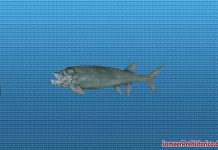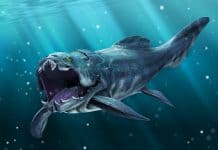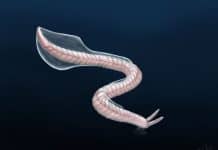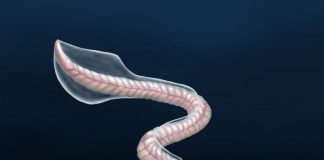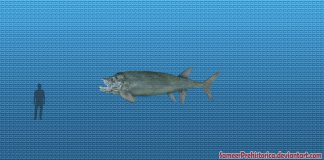Quick Leedsichthys Facts
- Lived during the Middle Jurassic Period
- Lived in oceans all over the world
- Was a filter-feeder
- May have been as long as a bowling lane
- Could have weighed as little as a hippo
- Could have weighed as much as a 6 elephants
- Lived on a diet of plankton
– Shop Leedsichthys Merchandise –
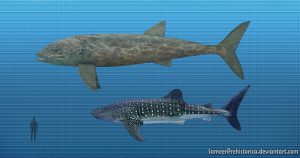
About Leedsichthys
Leedsichthys was an ancient fish that lived during the Middle Jurassic Period or about 189 to 144 million years ago. They were initially discovered when Alfred Nicholson Leeds discovered a lot of different fish fossils in his loam pits during the 1880s. When these fossils were examined by Othniel Charles Marsh, he decided that they weren’t dinosaur fossils but were indeed the fossils of a fish, so acclaimed fish expert Arthur Smith Woodward was called in to examine them. Mr. Woodward would then go on to describe and name this species Leedsichthys – a name which means “Leeds fish.” Named after the farmer which originally found the fossils of this fish.
Just looking at Leedsichthys pictures I can see how it would be easy to just write it off as just another fish. After all, it looks somewhat like a very large bass. However, that would be a mistake. That’s because this fish was significantly bigger than your average fish. It’s just no one knows for sure just how big it was.
Even though experts from around the world have collected many different specimens of this fish, they still can come to a consensus on what size it was. Some experts argue that it was 30 feet long and about 5 tons, while still others say it was 70 feet long and weighed 50 tons. These experts don’t agree because the fossilized remains don’t draw a convincing pictures of the average size of this fish.
Interesting Facts
One of the interesting facts about Leedsichthys, however, is that it was one of the first filter feeding fish. Filter feeding is how some whales eat and it is basically just filtering the plankton out of seawater to eat the plankton. Paleontologists believe this is because there was an explosion of plankton in the oceans during this period of time and that led to the development of filter-feeding fish like Leedsichthys. Scientists also believe that when plankton populations dipped again during the Cretaceous Period, then that was about the time that this fish went extinct.
